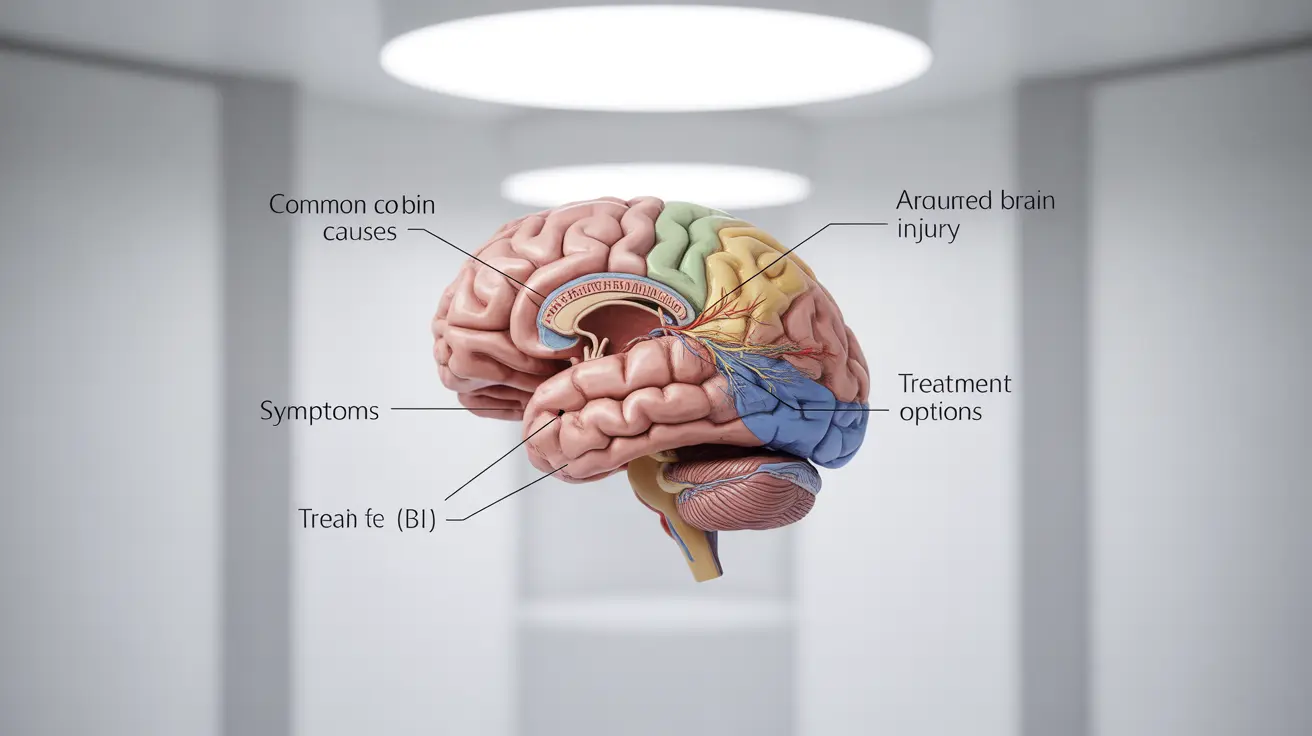Brain damage is a serious medical condition that can have profound effects on a person's physical, cognitive, and emotional well-being. Whether caused by trauma, illness, or other factors, understanding brain damage is crucial for recognizing symptoms early and seeking appropriate medical care.
This comprehensive guide explores the various aspects of brain damage, from its common causes to treatment options and recovery prospects, helping you better understand this complex medical condition.
Types and Common Causes of Brain Damage
Brain damage can occur through various mechanisms, broadly categorized into two main types: traumatic brain injury (TBI) and acquired brain injury (ABI).
Traumatic Brain Injury (TBI)
TBI results from external forces affecting the brain, such as:
- Vehicle accidents
- Falls and sports injuries
- Physical assault
- Combat injuries
- Penetrating head wounds
Acquired Brain Injury (ABI)
ABI develops from internal factors or medical conditions, including:
- Stroke
- Brain tumors
- Infections (meningitis, encephalitis)
- Lack of oxygen (hypoxia/anoxia)
- Toxic exposure
- Drug or alcohol abuse
Recognizing Brain Damage Symptoms
Symptoms of brain damage can vary significantly depending on the type, location, and severity of the injury. Early recognition of these signs is crucial for prompt medical intervention.
Physical Symptoms
- Headache
- Dizziness
- Nausea and vomiting
- Balance problems
- Vision changes
- Seizures
Cognitive Symptoms
- Memory problems
- Difficulty concentrating
- Confusion
- Impaired judgment
- Slow processing speed
- Language difficulties
Emotional and Behavioral Changes
- Mood swings
- Depression or anxiety
- Personality changes
- Impulsivity
- Aggression
- Sleep disturbances
Diagnosis and Assessment
Healthcare providers use various diagnostic tools and tests to evaluate brain damage:
Imaging Tests
- CT (computed tomography) scans
- MRI (magnetic resonance imaging)
- PET (positron emission tomography) scans
- SPECT (single-photon emission computed tomography)
Clinical Evaluations
- Neurological examination
- Cognitive assessment
- Balance and coordination tests
- Speech and language evaluation
- Psychological assessment
Treatment and Rehabilitation Approaches
Treatment for brain damage typically involves a comprehensive, multi-disciplinary approach tailored to each patient's specific needs and symptoms.
Immediate Medical Care
- Emergency trauma care
- Medication management
- Surgery (when necessary)
- Monitoring and stabilization
Rehabilitation Programs
Rehabilitation often includes various therapeutic approaches:
- Physical therapy
- Occupational therapy
- Speech and language therapy
- Cognitive rehabilitation
- Psychological counseling
Recovery and Prognosis
The potential for recovery from brain damage varies significantly among individuals and depends on multiple factors:
Factors Affecting Recovery
- Severity and location of damage
- Age and overall health
- Early intervention
- Access to rehabilitation services
- Support system strength
- Individual motivation and engagement
Frequently Asked Questions
What are the common causes and types of brain damage?
Brain damage typically occurs through traumatic injury (such as accidents or falls) or acquired injury (like strokes, infections, or oxygen deprivation). The two main categories are Traumatic Brain Injury (TBI) and Acquired Brain Injury (ABI).
What symptoms should I watch for if I suspect brain damage?
Key symptoms include headaches, confusion, memory problems, dizziness, nausea, vision changes, mood swings, and difficulties with speech or movement. Any sudden onset of these symptoms warrants immediate medical attention.
How is brain damage diagnosed and what tests are typically used?
Diagnosis typically involves imaging tests (CT, MRI, PET scans) and comprehensive neurological evaluations, including cognitive assessments, balance tests, and psychological evaluations.
What treatment and rehabilitation options are available for brain damage recovery?
Treatment options include immediate medical care, surgery when necessary, and comprehensive rehabilitation programs involving physical therapy, occupational therapy, speech therapy, and psychological support.
Can brain function improve over time after a brain injury, and what factors affect recovery?
Yes, brain function can improve over time, particularly with proper treatment and rehabilitation. Recovery depends on factors such as injury severity, location, age, overall health, early intervention, and access to rehabilitation services.




